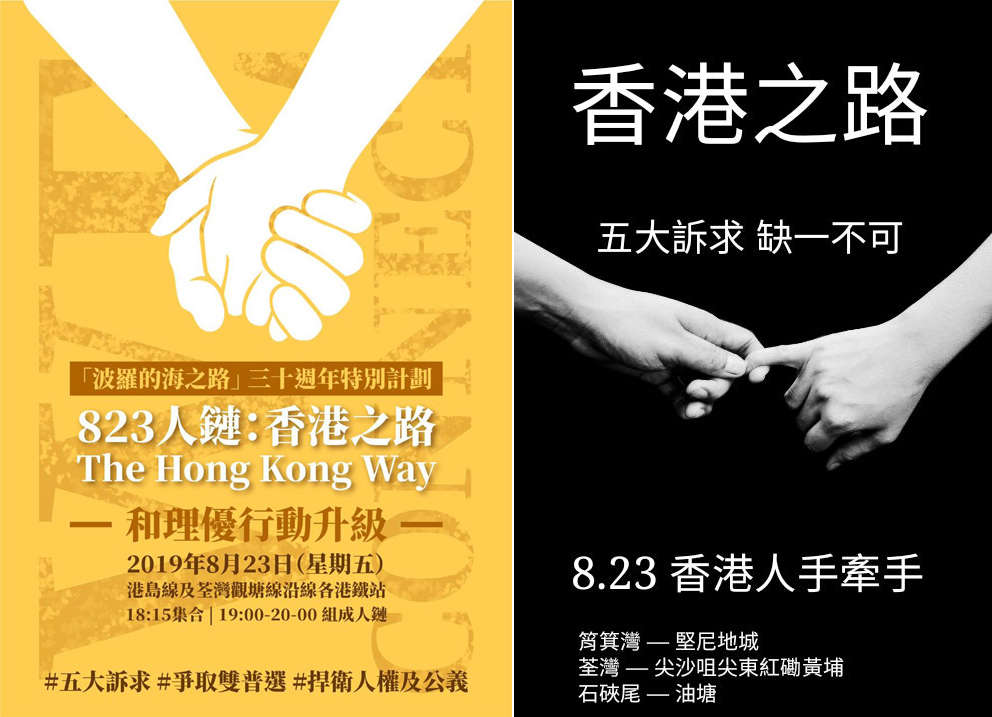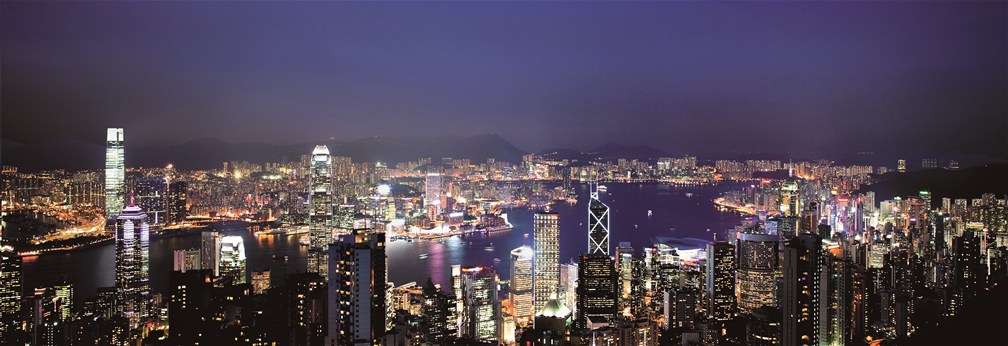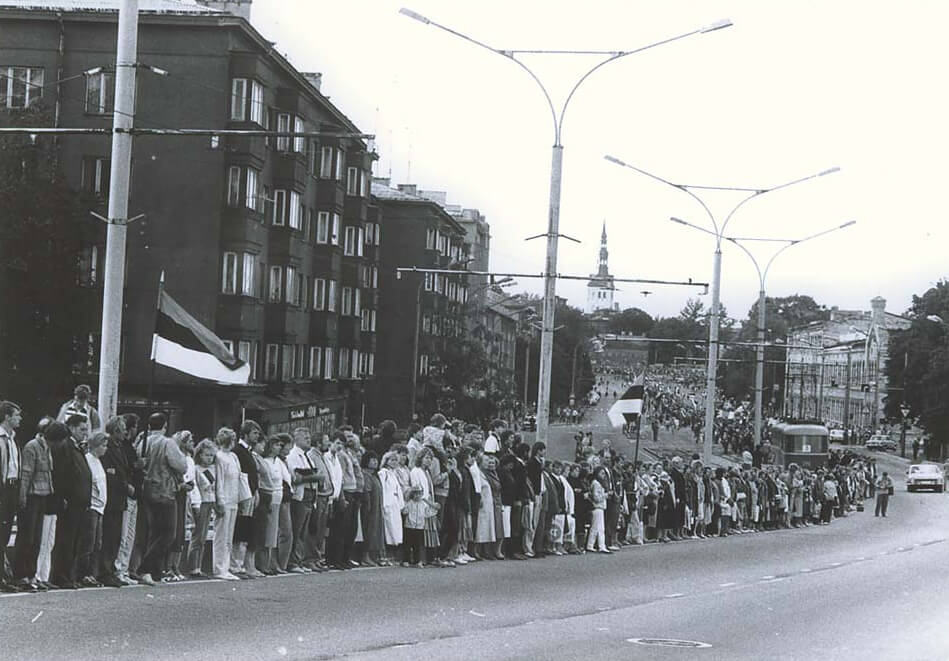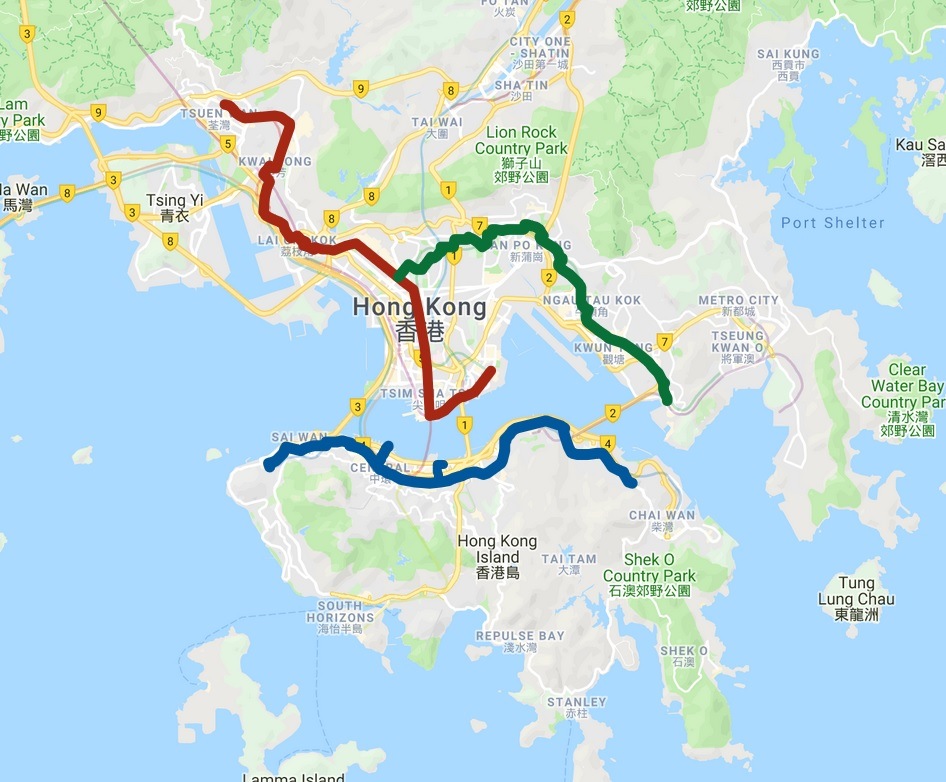A Tallinn-based Hong Kong startup entrepreneur proposed the Baltic Way-inspired human chain in a secret internet forum and the activists are turning the idea into reality – the human chain in support of democracy is due to take place in Hong Kong on 23 August, on the 30th anniversary of the Baltic Way.
At 7:00 PM on 23 August 1989, approximately two million people from Estonia, Latvia and Lithuania joined hands, forming a human chain from Tallinn through Riga to Vilnius, spanning 600 kilometres, or 430 miles. It was a peaceful protest against the illegal Soviet occupation, and also one of the earliest and longest unbroken human chains in history.
Now, anti-extradition bill protesters in Hong Kong are calling for a similar action in the China-controlled special administrative region. The street protests began over plans that would have allowed extradition from Hong Kong to mainland China, an authoritarian state. The protests started in March but escalated on 9 June and since then, millions of people have voiced their opposition on the streets. In addition to the now suspended (although not completely withdrawn) extradition bill, Hongkongers are now also demanding for wider democratic reform.
The Tallinn-based Hong Kong startup entrepreneur – who wished to remain anonymous, in fear of Chinese suppression – told Estonian World that she mentioned the idea of forming a human chain, inspired by the Baltic Way, in a discussion group of concerned Hong Kong citizens. “I mentioned it multiple times when people were brainstorming the next action we could take in Hong Kong. I am glad they took it on board,” she said.
Fear of China in Hong Kong
She said she did not know the organisers personally and many activists in Hong Kong are now hiding their identity for fear of political persecution – and the situation is “getting out of hand” with police brutality.
“I hope the government will come forward to answer the protesters’ demand and let the Hong Kong people to go back to their old peaceful life,” she told Estonian World. “One thing I do know – the Hong Kong people won’t back down this time; we are determined because we know this is probably the last time we can protest before Chinese government starts with political persecutions. Some students have already sought political asylum in Germany, for example.”

The entrepreneur said she heard about the Baltic Way from her Estonian friend, who had taken part of “this amazing event” in 1989. The Hongkonger told Estonian World that she wasn’t entirely sure about the impact the human chain could have in Hong Kong, but it would be worth trying. “I don’t think the government will react to this, but we need to try everything at this stage. It worked for Estonia! So that gives us some hope. Even if it gains some international attention, that’s already a good thing!”
Democratic demands
According to the Hong Kong Free Press outlet, the protesters came up with “The Hong Kong Way” plan on 19 August, in the Reddit-like LIHKG online forum. “The plan on LIHKG calls on Hong Kong people to gather at around 7 PM on Friday on sidewalks along the three main MTR lines in Hong Kong – the Tsuen Wan Line, the Kwun Tong Line and the Island Line – and hold hands, creating three human chains across Hong Kong Island and the New Territories as a form of peaceful protest,” the media outlet reported.

The publication reported that in the forum, the user called “Spring Worm” said: “The Baltic states showed the world they were united. Hong Kong residents are united now as well. All of our five demands must be fulfilled, especially our main demand: universal suffrage.”
The other demands include a full withdrawal of the controversial extradition bill, the retraction of the characterisation of recent protests as “riots,” the unconditional release of all arrested protesters, and the formation of an independent commission of inquiry into the events since June.
A show of solidarity
After this article was published, Estonian World was also contacted by one of the organisers of the protest, who said that “with inspired determination and a united voice”, the people of Hong Kong will gather to connect across districts and form the 40-kilometre (25-mile) long Hong Kong Way this Friday. “It will be a show of solidarity among people who are united against the extradition law and police violence, and a plea for international support,” the anonymous activist from the Hong Kong Protesters movement said.
“In the past two months, millions have marched peacefully on the streets only to be faced with violence. Thugs indiscriminately attacked innocent bystanders without police intervention; police shot bean bag projectiles and ruptured the eye of a first-aid volunteer; and undercover agents infiltrated the front-line to make arrests. We have overcome these and other fierce attacks, and we will not give up,” the activist said.
“We ask you to stand in solidarity with us. Write letters to your government representatives and demand that they speak up to the Chinese government on behalf of the people of Hong Kong. We plead that you will not look away at this crucial time. Stand with Hong Kong,” the organiser added.

According to the organiser, the liaison group organising the Hong Kong Way has around 30 people, but they liaise between various sub-groups – and the largest group have around 18,000 people. “We are aided by technology and can use the Telegram messaging app to organise and communicate in real time, which is very different from 30 years ago where any liaison work would have to be done far in advance,” the activist told Estonian World.
China not honouring the “one country, two systems” agreement
Hong Kong island became a colony of the British Empire in 1842 and the modern territory was completed in 1898 with a 99-year British lease over the New Territories, which comprise 86% of Hong Kong’s land. Under the British control, Hong Kong became a busy trading port and a manufacturing hub – and eventually one of the world’s financial centres.
In 1979, as the deadline for the 99-year-lease approached, the UK and China began negotiations over the future of Hong Kong. Although the southern part of the Hong Kong – the Hong Kong island – had been ceded to the UK in 1842 and was not part of the lease agreement, the British government under Margaret Thatcher realised that the island alone would be difficult to sustain.
China also threatened to seize Hong Kong in a day, should the UK not give it up voluntarily. According to Thatcher’s memoirs, “The Downing Street Years”, Deng Xiaoping, the then-Chinese communist leader, told the late British prime minister at a Beijing meeting in 1982 that “the Chinese could walk in and take Hong Kong back later today if they wanted to.” “I retorted that they could indeed do so; I could not stop them. But this would bring about Hong Kong’s collapse. The world would then see what followed a change from British to Chinese rule,” Thatcher wrote in her memoirs.

Hong Kong was handed over to China by the UK in 1997, under “one country, two systems” principle. Hong Kong would have its own governmental and legal systems and control its economic and financial affairs – including trade relations with foreign countries – but China would control the special region’s foreign and defence affairs.
Hong Kong was also supposed to have people’s rights and free speech protected – a major difference in comparison with mainland authoritarian China. But those rights are now on the decline, which is why so many Hongkongers – most people in the region identify themselves as such, only 11% call themselves “Chinese” – are protesting on the streets.
The Baltic Way as a powerful blueprint
The Baltic Way, also known as the Baltic Chain, was organised in order to draw the world’s attention to the existence of Molotov-Ribbentrop Pact – a treaty signed 50 years prior, on 23 August 1939, between the foreign ministers of the Soviet Union and Germany – Vyacheslav Molotov and Joachim von Ribbentrop.
In the secret protocols that accompanied the treaty of non-aggression, the two totalitarian powers divided Finland, Estonia, Latvia, Lithuania, Poland and Romania in violation of international law into respective spheres of influence, which led to Nazi Germany starting the Second World War on 1 September 1939 with its attack on Poland. The Soviet Union invaded Estonia and Latvia on 16 June 1940.
On 23 August 1989, approximately two million Estonians, Latvians and Lithuanians were taking hold of each other’s hands for fifteen minutes, and jointly demanding the recognition of the secret clauses in the Molotov-Ribbentrop pact and the re-establishment of the independence of the Baltic States.

People joined hands to create a 600 km long human chain from the foot of Toompea in Tallinn to the foot of the Gediminas Tower in Vilnius, crossing Riga and the River Daugava on its way, creating a synergy in the drive for freedom that united the three countries.
The Baltic Way helped publicise the Baltic cause around the world. The positive image of the non-violent Singing Revolution spread among the Western media. According to the Hong Kong Protesters movement, the local protesters are aiming the same.
“The Baltic Way brought the world’s attention to their cause and inspired following generations,” one of the organisers of the Hong Kong Protesters told Estonian World. “With inspired determination and a united voice, the people of Hong Kong will gather to connect across districts and form the Hong Kong Way this Friday. It will be a show of solidarity among people who are united against the extradition law and police violence, and a plea for international support.”
Cover: Proposed human chains. Photo: LIHKG.

